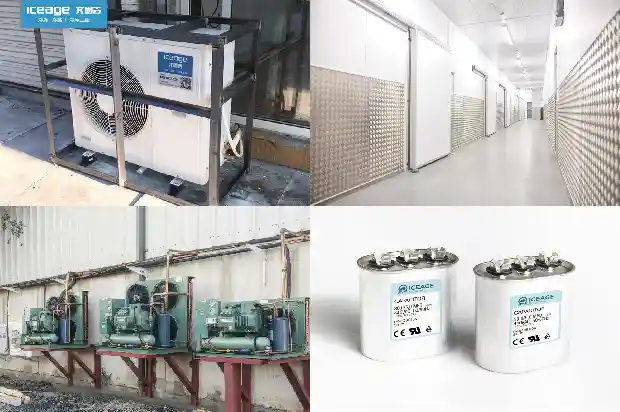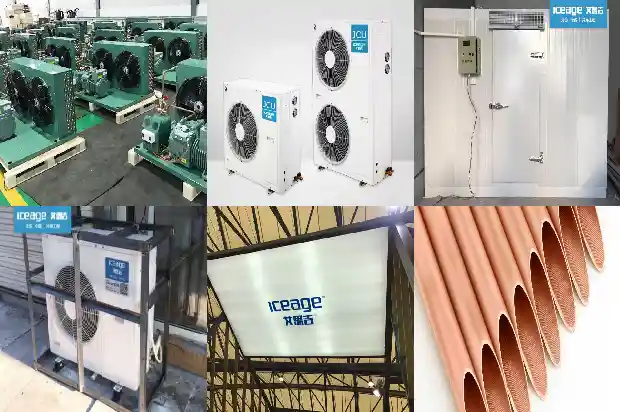Introduction to Energy - saving Methods of Cooling Towers
2025-03-17
Do you all know about cooling towers? The cooling tower is one of the essential components of the central air - conditioning system in large buildings, and the central air - conditioning refrigeration system can't do without it either.
The cooling tower can discharge the heat brought by the air - conditioning system from the air - conditioned area into the atmosphere. So, do you know which part can provide the air - conditioning refrigerant?
The refrigeration unit in the central air - conditioning system can provide the air - conditioning refrigerant.

This is actually a heat - exchange process. So, what is its working process?
The cooling water pump delivers the cooling water to the cooling tower and sprays it evenly on the surface of the heat - dissipation material. The flowing air generated by the operation of the cooling tower fan cools the cooling water on the surface of the cooling material. The cooled cooling water falls back into the water collector of the cooling tower and is returned to the refrigeration unit again through the pump to cool the refrigeration unit.

The wet - bulb temperature of the flowing air has a very important impact on the heat - dissipation efficiency of the cooling tower. When the flow rate of the cooling water flowing through the cooling tower is the same and the temperature difference between the inlet and outlet is the same, the higher the wet - bulb temperature, the greater the required air flow rate. In addition, the demand for heat dissipation of the cooling water and the air conditions are constantly changing. Therefore, the operating speed of the cooling tower fan needs to be adjusted dynamically.
Heat - dissipation efficiency. Then, how exactly should we measure the heat - dissipation effect of the cooling tower?
Pay attention! Let's learn this important part together.
(The temperature - relationship curve of the cooling tower)
The distance between points B and C is the difference between the temperature of the cooling water at the outlet of the cooling tower and the wet - bulb temperature of the flowing air entering the cooling tower. When the flow rate of the cooling water and the required temperature difference between the inlet and outlet are constant, the smaller this difference is, the better the heat - dissipation effect of the cooling tower. Usually, the larger the cooling tower, the better its heat - dissipation effect.
Pay attention! Let's learn this important part together.
(The temperature - relationship curve of the cooling tower)
The distance between points B and C is the difference between the temperature of the cooling water at the outlet of the cooling tower and the wet - bulb temperature of the flowing air entering the cooling tower. When the flow rate of the cooling water and the required temperature difference between the inlet and outlet are constant, the smaller this difference is, the better the heat - dissipation effect of the cooling tower. Usually, the larger the cooling tower, the better its heat - dissipation effect.
In order to meet the requirements of the heat - dissipation working conditions, it is imperative to adjust the rotation speed of the cooling fan at all times.
Just now, we assumed that under the condition that the cooling load (cooling water flow rate, temperature difference between the inlet and outlet) and the wet - bulb temperature of the air are fixed, the cooling tower has a constant requirement for the air flow rate. However, in reality, there will be certain fluctuations. Therefore, in order to meet the heat - dissipation requirements without over - cooling the cooling water (that is, the temperature difference between the inlet and outlet is greater than the actual requirement), the rotation speed of the cooling tower fan needs to be adjusted at all times.
Just now, we assumed that under the condition that the cooling load (cooling water flow rate, temperature difference between the inlet and outlet) and the wet - bulb temperature of the air are fixed, the cooling tower has a constant requirement for the air flow rate. However, in reality, there will be certain fluctuations. Therefore, in order to meet the heat - dissipation requirements without over - cooling the cooling water (that is, the temperature difference between the inlet and outlet is greater than the actual requirement), the rotation speed of the cooling tower fan needs to be adjusted at all times.
Achieve fan speed regulation? The frequency converter can help you.
(The condenser system of the cooling tower and cooler with a frequency converter)
As a frequency converter, its main task is to control the rotation speed of the fan. The three - phase power output wires of the frequency converter are connected to the motor of the cooling tower fan, and the cooling water return - water temperature sensor is connected to the control terminal of the frequency converter and used as the basis for judging the adjustment of the fan rotation speed.
After adding the frequency converter, the operation is very simple. Just set the cooling water temperature required by the refrigeration unit and the necessary parameters of the temperature sensor, and the frequency converter can dynamically control the rotation speed of the cooling tower fan in real - time.
In the control system of the cooling tower fan with the frequency converter as the control core, as long as the system requirements do not exceed the design capacity of the cooling tower, no matter what the reason is (changes in the refrigeration load, changes in climatic conditions, etc.), the cooling tower can continuously track the heat - dissipation requirements of the refrigeration unit for the cooling tower and provide the refrigeration unit with cooling water at an ideal temperature.
Using a frequency converter to adjust the speed of a cooling fan powered by a three - phase motor is the most convenient and efficient means. While achieving fan speed regulation, the best energy - saving effect can also be obtained. Comprehensive monitoring of the cooling tower (de - icing treatment of the cooling tower, pre - heating control of the cooling fan motor, and the transmission function of the cooling tower operation data) is also within reach.
(The condenser system of the cooling tower and cooler with a frequency converter)
As a frequency converter, its main task is to control the rotation speed of the fan. The three - phase power output wires of the frequency converter are connected to the motor of the cooling tower fan, and the cooling water return - water temperature sensor is connected to the control terminal of the frequency converter and used as the basis for judging the adjustment of the fan rotation speed.
After adding the frequency converter, the operation is very simple. Just set the cooling water temperature required by the refrigeration unit and the necessary parameters of the temperature sensor, and the frequency converter can dynamically control the rotation speed of the cooling tower fan in real - time.
In the control system of the cooling tower fan with the frequency converter as the control core, as long as the system requirements do not exceed the design capacity of the cooling tower, no matter what the reason is (changes in the refrigeration load, changes in climatic conditions, etc.), the cooling tower can continuously track the heat - dissipation requirements of the refrigeration unit for the cooling tower and provide the refrigeration unit with cooling water at an ideal temperature.
Using a frequency converter to adjust the speed of a cooling fan powered by a three - phase motor is the most convenient and efficient means. While achieving fan speed regulation, the best energy - saving effect can also be obtained. Comprehensive monitoring of the cooling tower (de - icing treatment of the cooling tower, pre - heating control of the cooling fan motor, and the transmission function of the cooling tower operation data) is also within reach.
Related Articles
- Introduction to the Application of End - product, Fan and Motor Characteristics (Fan - coil Unit Section)
- Comprehensive Introduction to Chilled Water Systems of Large - scale Central Air - conditioners
- Introduction to Inspection and Handling Methods for Refrigerant Leak in Cold Storage
- Introduction to Control Valves in Refrigeration Systems
- Introduction to Basic Types of Cold Storage
- Introduction to Lithium Bromide Absorption Chillers
- Introduction to the Advantages of Dual - temperature Cold Storage
- Introduction to Various Water Tanks in Air - conditioning Systems
- Introduction to the Cleaning Processes and Methods of Heat Exchangers and Cooling Towers
- Introduction to Six Kinds of Two-stage Compression Refrigeration Systems
- Introduction to Key Points of Compressor Grouping in Quick-freezing Cold Storage
- Introduction to the Construction and Features of Cold Storage in Cold Chain Logistics
- All-round Introduction to Condensers and Evaporators!
- Introduction to Vapor Barrier of Cold Storage and Moisture Protection of Equipment
- Introduction to Oil Collector in Refrigeration System
- Technical Introduction of Process Cooling Water System
- Introduction to Air-cooled Chiller
- Introduction to Five Classification Functions of Cold Storage Installation for Refrigeration
